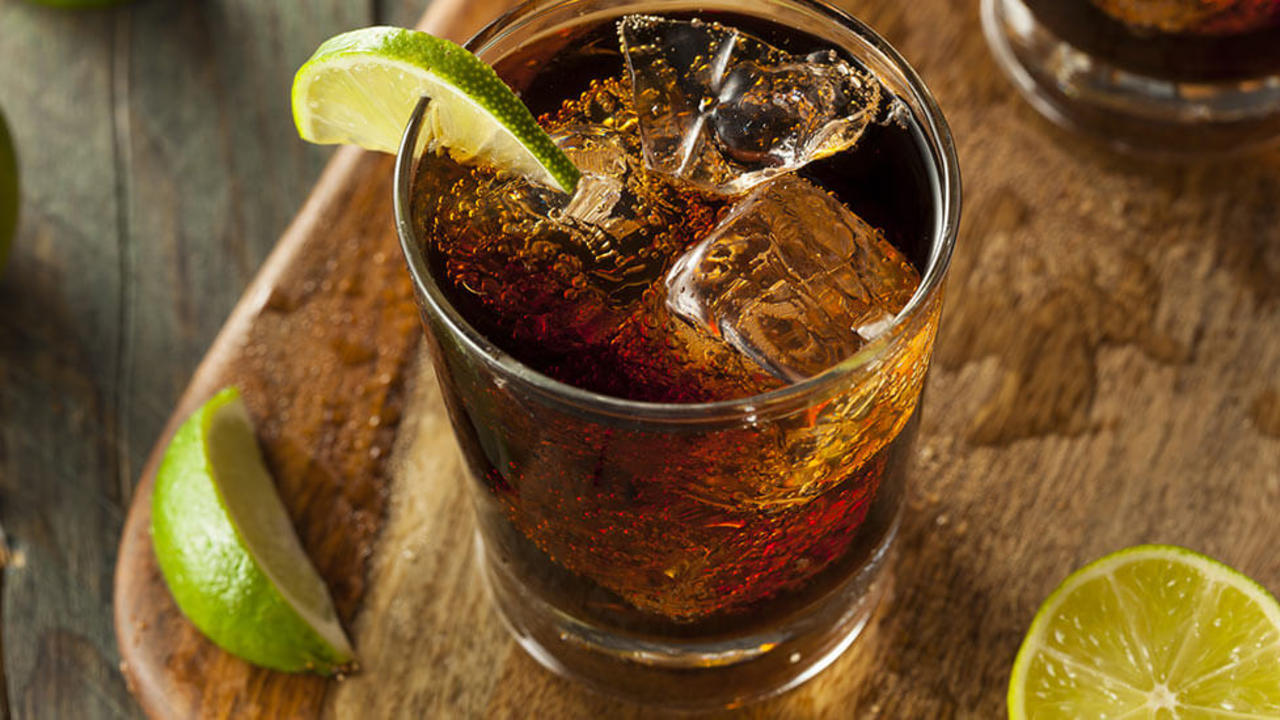Learn How to Taste Whisky: Our Whisky Tasting Guide
Soaked in history and full of culture and tradition, whisky certainly has some mystery to it. Many people want to know more and they especially want to learn how to taste whisky.
Whether you’re heading to a distillery to do a whisky tasting course, or your simply having some friends over for a whisky night, it’s a good idea to have some of that sommelier know-how up your sleeve.
If you are an avid whisky lover and would like more information on our exclusive partnership with Glenfiddich, click here.
Our whisky tasting guide will take you through the process, introduce you to some useful vocabulary to help you describe whisky, and give you some key information.
Step One: The Whisky Glass
There are several different types of whisky glasses and some are better for a tasting session than others.
Copita or tulip style whisky glass
The Copita style glass is a type of Spanish sherry glass. It has a wide base, a stem, and the sides narrow to the top. This makes it ideal for nosing. Nosing is the action of smelling the whisky to uncover its aromas, characteristics and “personality”. The stem allows the taster to keep the whisky from warming in their hand, and the “tulip’ shape of the glass allows the alcohol vapour to dissipate, without overwhelming the more subtle aromas of the whisky.
Glencairn whisky glass
Also well adapted for nosing whisky, the Glencairn glass has been specifically designed for swirling, observing, and drinking whisky. Like the Copita, the shape of the glass allows the taster to appreciate the delicate smell and flavours of the drink in hand.
Snifter glass
Snifters are a relatively common way to serve straight whisky. The bowl-like shape of the glass, means it does not tend to filter out the alcohol vapour in the same way as the Glencairn or Copita. This makes it harder for the taster to discern the more ethereal notes and aromas, resulting in a somewhat flatter tasting session.
Tumbler and Highball
Not designed for tasting at all, the tumbler and highball glasses are best when you simply want a good whiskey on the rocks, with ice and soda, or whisky cocktail.
Step Two: Whisky Legs
Contrary to popular belief, whisky legs aren’t what you get after an evening of whisky tasting. Rather they’re the transparent remnants of alcohol that coat the sides of your glass and then ‘walk down’ after swirling your drink. By observing how quickly the whisky legs return to your drink, you’re able to see how viscous your whisky is. If your whisky has quick legs, it’s lighter on its feet and probably quite young. Slow whisky legs, on the other hand, indicate a heavier, more mature whisky. Kinda like people.
Step Three: Nosing Your Whisky
According to Nature Magazine, the human nose has 400 different scent receptors and can identify over a trillion different scents. Quite a feat! With your new found super power, you’ll be able to really enjoy your whisky.
When you go to smell - or ‘nose’ - your whiskey, you should do it in stages. The first sniff will probably be quite alcoholic and you won’t catch many of the drink’s subtleties. Being so strong you should also avoid inhaling for too long, or you might start feeling dizzy.
The second, third, and fourth inhales will give you more of an idea of the whisky’s character. First, let your mind go blank and allow your nose to take over. Smell is a very nostalgic sense, so let the whisky tap into your memory. What does it remind you of?
Perhaps you notice the salt air of a seaside walk, the warmth of the sun on a summer field, your uncle’s old smoky pipe, or a waft of an oak tree in the forest, or even a putrid cabbage. Whatever you smell, note it down, clear your mind, and sniff again.
Step Four: Add a Splash of Water
A drop of still water in your whisky will dilute the alcohol slightly and bring out the flavour. It’s a good way to get a real handle on your drink and understand it more deeply.
Ice will dilute it too much and make nosing the whisky very difficult (chilling the nose will dampen your sense of smell).
Step Five: Tasting and Savouring Your Whisky
Ah, the fun bit. Sip, savour, and swallow. It’s time to look out for different flavours, how it interacts with your taste buds and also how it goes down. Does it have a bite? Is it a sweet tasting scotch? Does it feel angry? Smooth or salty? Light, heavy or smoky?
There’s no wrong answer, what you experience is yours. Simply observe what you taste and note it down.
Sound like a whisky expert
When you’re dressed to impress and swilling some whisky, you should probably know your lingo too. If you don’t know a “citrus” whisky from a “peaty” one, our quick vocabulary guide will help you describe your drink.
And remember, you can be poetic! Tell people what your drink reminds you of, how it makes you feel, and use your memory, and all of your senses.
Balanced - the flavours blend well and nothing is particularly overwhelming
Youthful - light, bright interesting flavours, but hard to define and distinguish
Mature - smooth, well blended, distinctive notes, and flavour tones
Smoky - your whisky reminds you of log fires and oak trees
Fiery - it has a bite or a kick as it goes down, and perhaps a stronger taste of alcohol than you would prefer
Bready - perhaps your whisky has an element of wheat, reminding you of French baguettes and fresh produce
Dry - less fruity, with very little sweetness, you might ask for a glass of water afterwards
Fruity - sweet, fresh and light, perhaps there’s a hint of oak in there too
Citrus - can you taste orange, lemon or other fruits?
Light - it’s easy to drink, refreshing, and open
Peaty - you can taste the smoke and it reminds you of the highlands
Seaweedy - you can taste the ocean and you feel like a pirate, this is probably a whisky from the islands
Salty - some whiskeys have a salty or briney quality
A Whiskey Glossary
ABV
ABV stands for Alcohol By Volume. The higher the ABV, the stronger your drink is. By law, Scotch whisky must be bottled at a minimum alcoholic strength of 40% ABV, but can be higher depending on the producer.
American Whiskeys
Most American whiskeys are types of grain whiskey, with a large corn (maize) component. These are the most common variations:
Bourbon: the classic American whiskey, made famous in Kentucky, is aged in new, charred white oak barrels. In terms of flavour, you’ll probably notice a slightly sweeter flavour than traditional malt whisky. This is thanks to the type of grain used; bourbon is made from at least 51% corn, though it can have other grain components. If you’re looking for a classic Kentucky bourbon, Maker’s Mark is a good place to start.
Tennessee whisky: is a subcategory of bourbon. Jack Daniels, for example, is classed as a Tennessee whisky and that distinctive “Jack Daniels taste” comes from its journey through a tightly packed charcoal filter. But in most cases it can be hard to spot the difference between a bourbon and a tennessee whisky.
Rye Whiskey: aged for at least 2 years, rye whisky is distilled from at least 51% rye and also often contains malted barley and corn. It has a fruity, spicy character, and a deep, satisfying colour. Want a rye whisky cocktail? Try a Rye Old Fashioned, for a slightly drier taste along with some Don Draper flair.
Wheat Whisky: this “bready” sweet whisky is made up of at least 51% wheat and a combination of other grains. If a whiskey contains less than this percentage of wheat, it may be considered a “wheated bourbon” instead. Aged in oak barrels and matured as with other styles, it can have complex flavours, but if often quite sweet.
Barrel
There’s more to a whisky barrel than meets the eye. All scotch whisky barrels are made from oak - a porous hardwood that allows the spirit to seep in and out, adding colour and character to the final product.
Scotch producers never use new barrels. Distilleries typically source their barrels from American bourbon producers, but old wine or rum casks can also be used. The inside of the barrels are charred before the spirit is left to mature, adding to the complexity and depth of the whisky’s character.
Blended Whisky
Blended whisky refers to a combination of single malt and grain whiskies. While single malts can differ greatly in terms of strength, flavour, bite, and so on. Large-scale producers employ highly-skilled master distillers to blend whiskies. Their years of experience and well-developed palate allows them to combe a number of flavour characteristics in order to produce a recognisable final product.
Malted barley
Barley is soaked in water and allowed to germinate. It’s then heat treated, halting the germination process, which creates malt.
A principal ingredient in many types of whisky, malt has a type of enzyme that breaks starch into sugars, which can then be fermented to create alcohol.
Mash
Malt is ground into a powder called grist and then put in a large container called a Mash Tun along with hot water.
Proof
The ‘Proof’ of any alcohol is calculated by doubling the percentage of alcohol by volume. For example, a whisky with 40% alcohol will be 80 proof.
Still
Whisky stills are large heaters made from copper, designed to distill the spirit. The first distillation goes through the Wash Still and creates an alcoholic liquid called Low Wines. On the second distillation it goes through the Spirit Still, which creates a much higher proof alcohol.
Uisge beatha
Uisge beatha is the Scots Gaelic term meaning “water of life”. The modern spelling of whisky is derived from this word.
Wash
Wash is the alcoholic liquid which is then distilled to make whisky.
Whisky legs
Swirl your whisky in a glass and you’ll see the transparent remnants of alcohol called whisky legs. Fast moving whisky legs indicate a younger, lighter whisky. Slower legs show an older, more viscous drink.
Wort
Wort is the liquid taken from the mash tun; once yeast is added it’ll ferment and create an alcoholic liquid.

